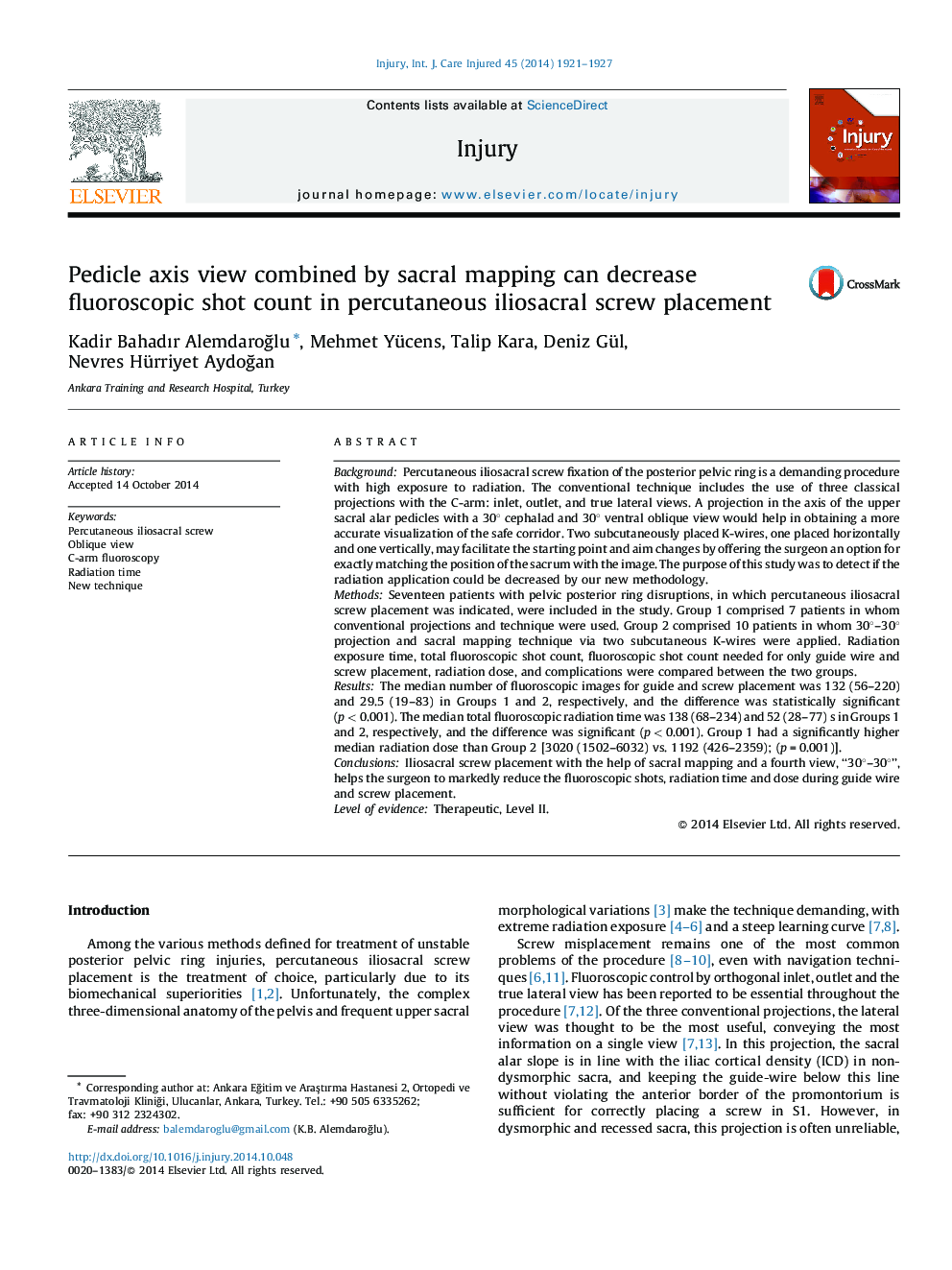| کد مقاله | کد نشریه | سال انتشار | مقاله انگلیسی | نسخه تمام متن |
|---|---|---|---|---|
| 6083701 | 1206004 | 2014 | 7 صفحه PDF | دانلود رایگان |

BackgroundPercutaneous iliosacral screw fixation of the posterior pelvic ring is a demanding procedure with high exposure to radiation. The conventional technique includes the use of three classical projections with the C-arm: inlet, outlet, and true lateral views. A projection in the axis of the upper sacral alar pedicles with a 30° cephalad and 30° ventral oblique view would help in obtaining a more accurate visualization of the safe corridor. Two subcutaneously placed K-wires, one placed horizontally and one vertically, may facilitate the starting point and aim changes by offering the surgeon an option for exactly matching the position of the sacrum with the image. The purpose of this study was to detect if the radiation application could be decreased by our new methodology.MethodsSeventeen patients with pelvic posterior ring disruptions, in which percutaneous iliosacral screw placement was indicated, were included in the study. Group 1 comprised 7 patients in whom conventional projections and technique were used. Group 2 comprised 10 patients in whom 30°-30° projection and sacral mapping technique via two subcutaneous K-wires were applied. Radiation exposure time, total fluoroscopic shot count, fluoroscopic shot count needed for only guide wire and screw placement, radiation dose, and complications were compared between the two groups.ResultsThe median number of fluoroscopic images for guide and screw placement was 132 (56-220) and 29.5 (19-83) in Groups 1 and 2, respectively, and the difference was statistically significant (p < 0.001). The median total fluoroscopic radiation time was 138 (68-234) and 52 (28-77) s in Groups 1 and 2, respectively, and the difference was significant (p < 0.001). Group 1 had a significantly higher median radiation dose than Group 2 [3020 (1502-6032) vs. 1192 (426-2359); (p = 0.001)].ConclusionsIliosacral screw placement with the help of sacral mapping and a fourth view, “30°-30°”, helps the surgeon to markedly reduce the fluoroscopic shots, radiation time and dose during guide wire and screw placement.Level of evidenceTherapeutic, Level II.
Journal: Injury - Volume 45, Issue 12, December 2014, Pages 1921-1927